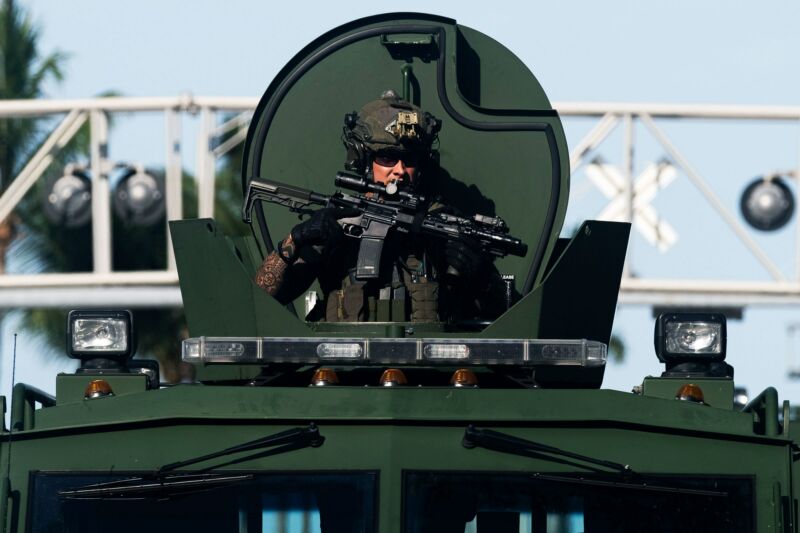The Pentagon’s hand-me-downs helped militarize police. Here’s how

Enlarge / A Miami Police officer watches protesters from an armored vehicle on May 31, 2020. (credit: Richard Arduengo | Getty Images)
The images of this past week are both inescapable and indelible: protesters flooding the streets of cities across the United States, met by police forces equipped with full body armor and tactical vehicles that vaguely resemble tanks. The local law enforcement responding to even nonviolent protests has often looked more like the US Armed Forces-and that was before President Donald Trump deployed an actual military police battalion against peaceably assembled US citizens in the nation's capitol Monday. That's no accident.
It's easy enough to buy tactical gear in the US, and the Homeland Security Grant Program has funneled billions of dollars to law enforcement agencies to acquire military-grade equipment. But for decades, a primary driver for why it can be so hard to tell a National Guard troop from a local cop has been the Department of Defense itself, through a program that has parceled out everything from bayonets to grenade launchers to precincts across the country.
Created as part of 1997's National Defense Authorization Act, the 1033 program allows the Department of Defense to get rid of excess equipment by passing it off to local authorities, who only have to pay for the cost of shipping. (A precursor, the slightly more restrictive 1208 program, began in 1990.) According to the Law Enforcement Support Office (LESO), which oversees the process, over $7.4 billion of property has been transferred since the program's inception; more than 8,000 law enforcement agencies have enrolled. Much of that inventory is perfectly ordinary: office equipment, clothing, tools, radios, and so on. But the haul also includes some of the so-called controlled equipment-rifles, armored vehicles, and so on-that have helped create such a spectacle of disproportion.
Read 14 remaining paragraphs | Comments